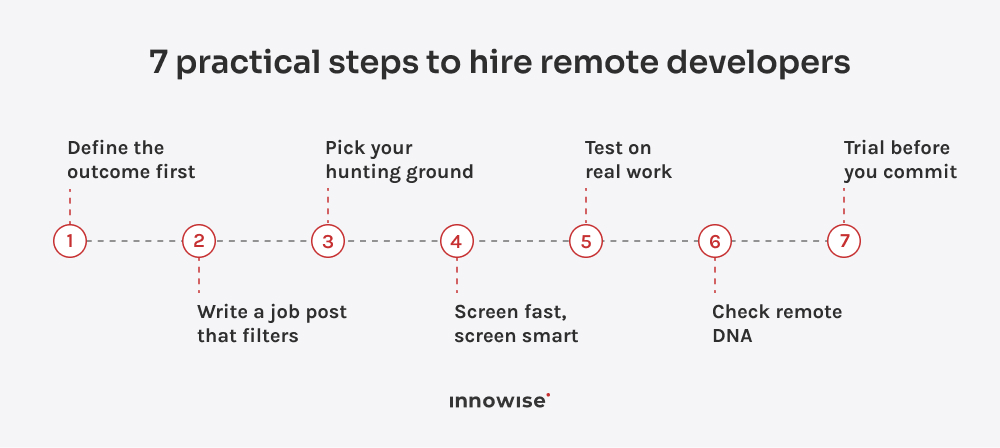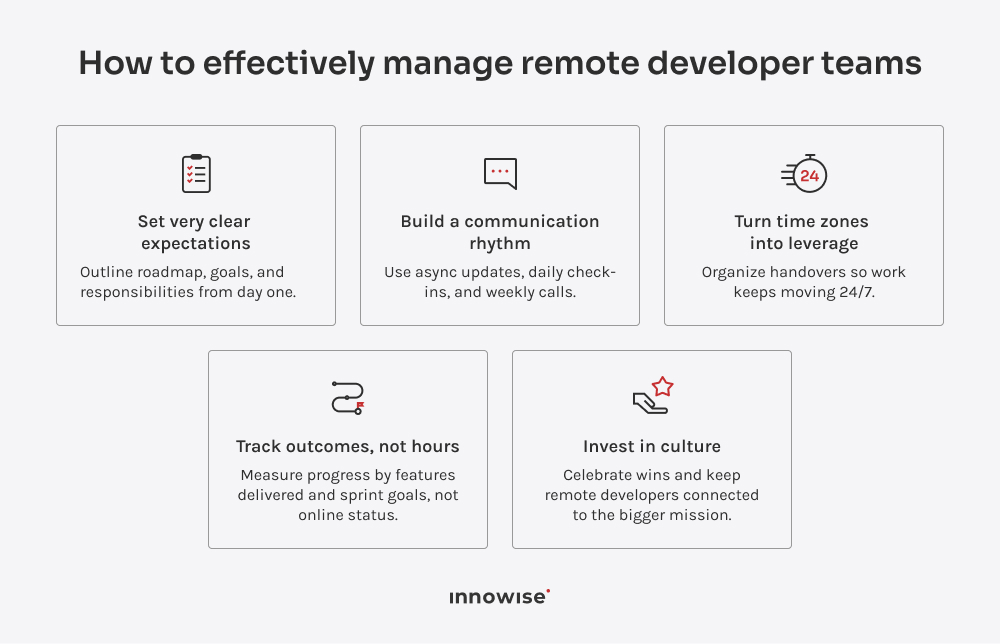Step 1 — define the role and skills
Hiring works best when the role is crystal clear. Start with the business outcome you need: is it building a new product, scaling a feature team, or clearing backlog? That answer dictates whether you hire full-time remote developers for stability or part-time and contract developers for flexibility.
Be specific about required stacks and soft skills (communication, ownership) because those are the traits that keep a remote team of developers productive without constant oversight.
Step 2 — write a strong job description
A vague job ad attracts broad candidates, whereas a clear description acts like a filter, only bringing in candidates who meet your expected baseline.
Best practice is to include project goals, collaboration tools, time zone expectations, and your company culture. This way, you’re setting the stage for integration into your distributed development team so they can be productive from the get-go.
Step 3 — source candidates from the right channels
Choosing the right sourcing strategy can save weeks of wasted effort. Public job boards give you sheer volume, but you’ll spend hours filtering out mismatches. Developer communities on GitHub, Stack Overflow, or niche Discord groups are another path when you’re looking for very specific expertise, though outreach takes more time and effort. Vetted platforms and curated talent pools, such as Toptal or Lemon.io, deliver pre-checked specialists who can integrate faster. Outstaffing vendors like Innowise go a step further by combining access to vetted developers with full support on contracts, payroll, and compliance. This way, you get a remote software development team that’s both fast to onboard and risk-free to scale.
Step 4 — run a fast screening
The danger here is wasting time on the wrong fits. A quick, structured screening process makes all the difference. The most effective filters are simple: does the candidate have the right tech stack, proven remote experience, and strong communication skills? With those criteria, you can eliminate most mismatches in hours instead of weeks and avoid the “false starts” that derail delivery.
Step 5 — test technical ability
Resumes can look impressive, but don’t prove execution. A practical task tied to your real-world problem or a GitHub repo review reveals far more. This ensures you hire remote programmers who can actually contribute, not just talk about it. For business leaders, this translates into faster onboarding and reduced rework — two of the biggest hidden costs in project execution.
Step 6 — assess remote readiness
Remote hiring fails most often on soft skills, not code. The real differentiator is whether a developer can handle time zone gaps, work comfortably with asynchronous tools, and communicate clearly across a distributed team. Those traits are what keep projects running without constant micromanagement. This, in turn, means fewer fires to put out and more consistent delivery.
Step 7 — start with a short paid trial
A one or two-week trial gives you a live test of skills, accountability, and fit. This step de-risks the decision: you see how a candidate performs within your environment before making a long-term hire. Businesses that do this rarely suffer from costly mis-hires because they validate performance in real conditions.




















